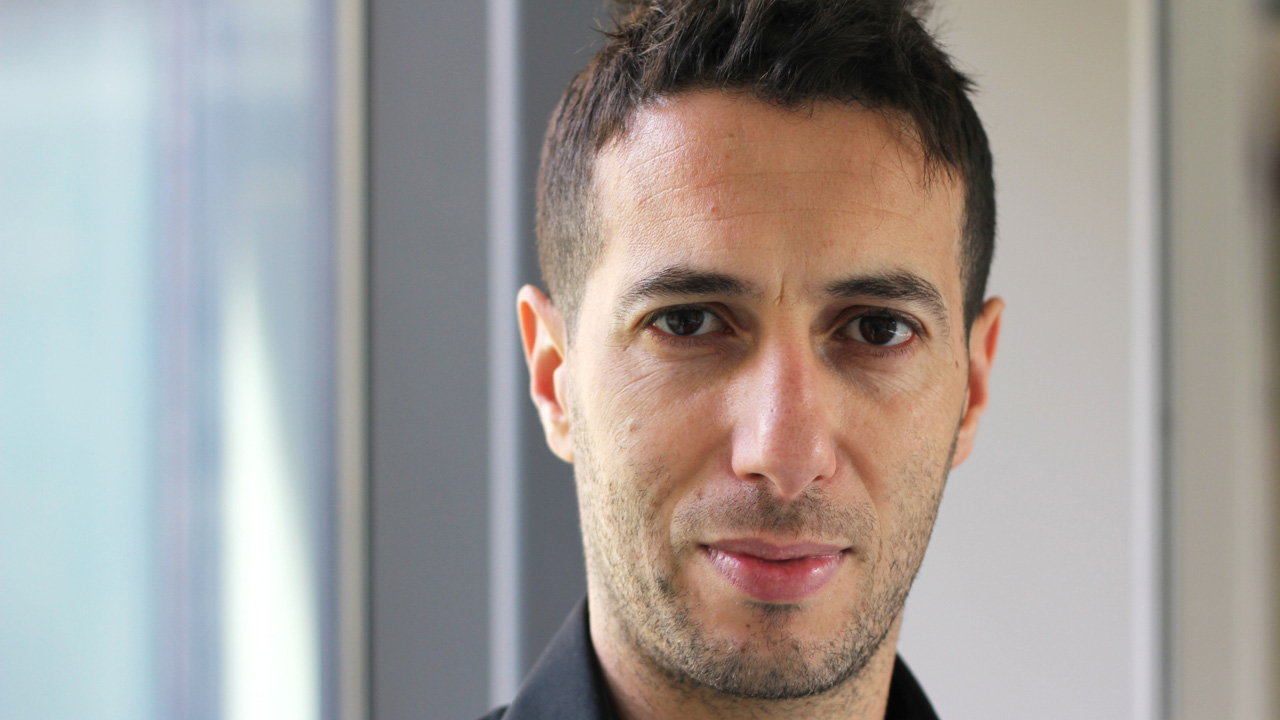A globetrotting postdoc offers up words of wisdom to his pre-SRI self
From Africa to Europe and now North America, Dr. Yacine Touahri’s journey to Sunnybrook Research Institute (SRI) as a postdoctoral fellow crosses international waters. Born in Algeria, he relocated to France for school, where he developed an interest in science and embarked on a path toward studying the central nervous system. His passion led him to Calgary, Alta. under the tutelage of Dr. Carol Schuurmans, whose work he tracked fervently en route to his PhD. When Schuurmans accepted a senior scientist position at SRI in 2016, Touahri didn’t hesitate to follow her; it didn’t hurt that his wife, whom he met in France, had already taken up a postdoc position at McMaster University.
Touahri’s research at SRI is centred on the eye. “We develop a sort of therapy for retinal cellular replacement,” he says. As photoreceptors are damaged and destroyed from various diseases and injuries, blindness becomes a harsh reality for many people. Touahri and his colleagues are seeking a solution to this through two avenues. The first is by way of transdifferentiation, which involves taking cells that are unrelated to the eye, manipulating them to become photoreceptors and then transplanting them into the eye to enable vision. The second entails inducing internal cell sources already located in the eye to regenerate lost photoreceptors.
Here, Touahri chats with Matthew Pariselli about how his enthusiasm for science was born, what SRI has afforded him and what he sees in his future.
How did you become interested in science?
It started when I was in undergrad. I was taking different classes, and one of them was a course on genetics. The professor showed us an image of a Drosophilia melanogaster, which is basically a fruit fly, and it had a leg on its head. He said it was from a mutation in one gene, and that was fascinating to me. How would the manipulation of one gene transform an antenna into a leg? That, for me, was the hit.
How has SRI benefited you as a researcher?
It’s been beneficial in two ways. The first one is internal to SRI. We’ve joined a place with focused ultrasound, and for us this is very important because we know how to transplant the cells, but it’s still a little bit harmful. One big opportunity we have here is using focused ultrasound to be able to inject the cells into the eye. This is a big advantage. The other one is being close to the stem cell community in Toronto, which is one of the leading communities in stem cell work. We’re already collaborating with them, but being close to them makes it easier.
Armed with the knowledge you’ve gained since arriving at SRI, what advice would you offer the pre-SRI version of yourself?
I would say to be more aware of what people in different fields are doing. In Calgary it was the kind of institute where all the labs were doing the same kind of things. However, here we are surrounded by people working on cancers [and] in immunology, and the interactions with these people fosters knowledge. Just by interacting with them, you see what they’re doing and find a way to apply it to what you’re doing. That’s pretty important. We’re working on retinas, so we wouldn’t go and read papers on something else like cancer, but being here, exposed to other researchers, we can learn. You go to their presentations, or you chat with them over a coffee in the cafeteria or lunchroom, and it opens your eyes to things that you never would have thought about.
You are mentoring some summer students. How do you feel about this role?
It’s exciting. You get people who don’t have experience working in a lab. They come, they’re naïve, and they get excited about things you wouldn’t expect. You take a student to a microscope and he sees a big slushy thing, and he’s like, ‘Oh! I got something!’ So he takes pictures. But I’m like, ‘That’s dust on your slide.’ [laughs] But then you see them learn, how fast they pick things up, and after a couple of months it’s like they have always been here. There’s a big sense of pride. It’s rewarding.
What would you like to do in the future?
Ideally, I’d like to finish this [retinal cellular replacement] project and bring a new piece to the research on photoreceptor transdifferentiation. Then the big opening for me research-wise is to study the mobilization of endogenous cells in response to injury and degenerative conditions. It’s very exciting, because the lower vertebrates have this ability to spontaneously regenerate the retina after injury by mobilizing endogenous cells. The higher up in evolution you go, though, this ability is lost. Why can fish regenerate the eye and humans can’t? Ideally, I’d like to establish my own group and collaborate with Carol to study these questions.






